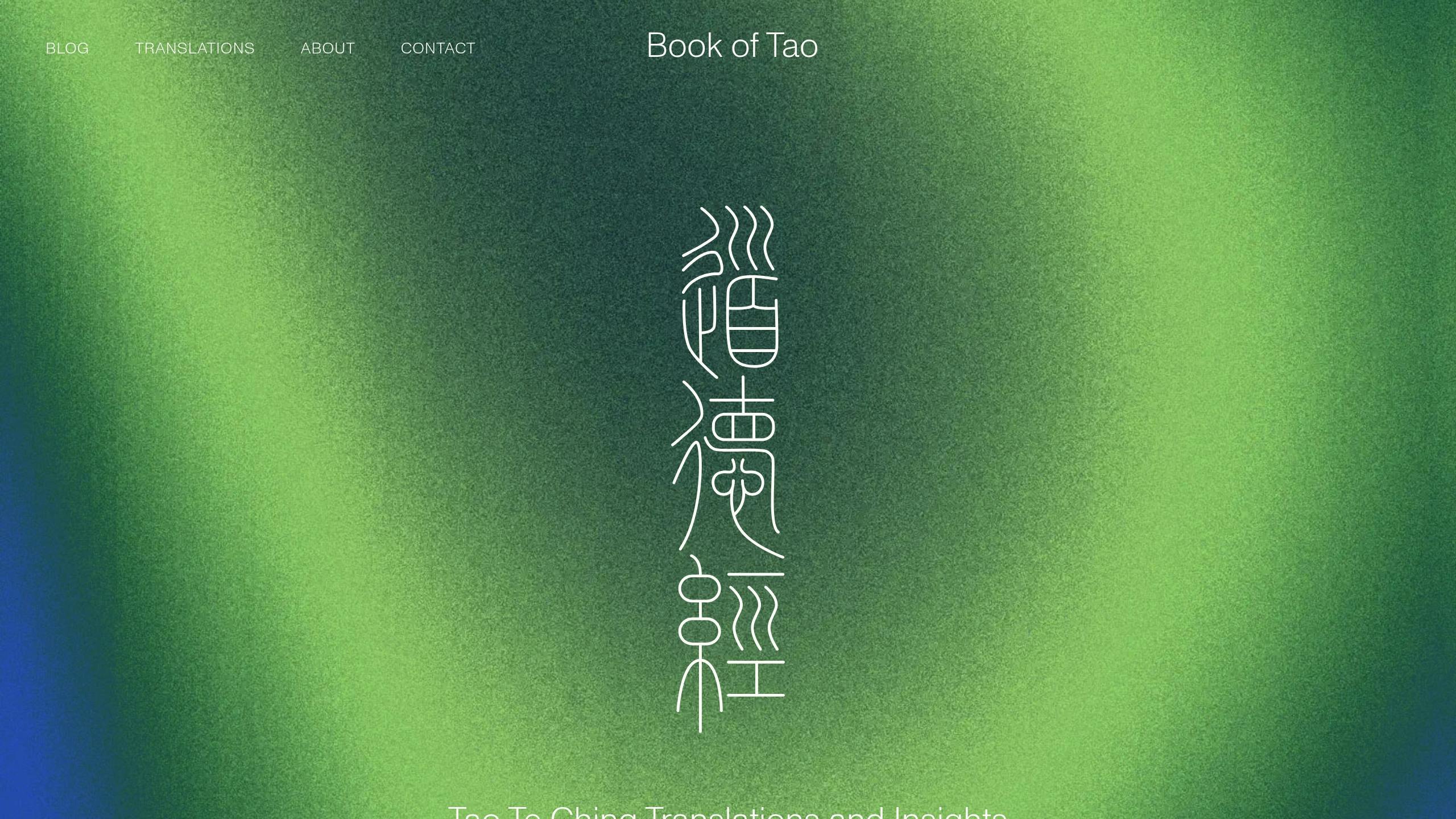The I Ching, or Book of Changes, is an ancient Chinese text that helps with self-reflection, decision-making, and personal growth. It uses hexagrams - patterns of six lines - to provide insights into life’s challenges. Here’s how it can guide you:
Benefits of Practicing I Ching:
- Mental Clarity: Clearer decisions, less mental clutter.
- Emotional Stability: Better stress management.
- Personal Growth: Increased self-awareness.
- Daily Living: Improved relationships and mindfulness.
How to Start:
- Prepare Your Space: Use soft lighting, comfortable seating, and keep your tools (coins, book, journal) organized.
- Meditate: Spend 5 minutes relaxing your mind before starting.
- Ask Clear Questions: Focus on open-ended, specific, or growth-oriented queries like, “How can I improve my leadership skills?”
Reading the I Ching:
- Toss 3 coins six times to create a hexagram.
- Interpret the hexagram's overall image, lines, and changing lines for guidance.
- Reflect on how its message relates to your situation.
Daily Practice:
- Morning: Meditate and consult the I Ching for the day’s focus.
- Daytime: Practice living in balance (Wu Wei) and observe events without resistance.
- Evening: Reflect on your day and journal insights.
By blending ancient wisdom with mindfulness, the I Ching can help you make better decisions, find balance, and grow personally. Start small, stay consistent, and let its guidance shape your journey.
Discover the I Ching: Inner Guidance for Any Question
Getting Started with I Ching
Create a calm and focused environment to connect with the I Ching and gain meaningful insights.
Setting Up Your Space
Prepare a space that encourages focus and tranquility for your I Ching practice. Here are some tips to create the ideal setup:
| Element | Purpose | Suggested Implementation |
|---|---|---|
| Lighting | Sets a calming mood | Use natural light or soft, warm lamps |
| Seating | Ensures comfort and posture | Choose a cushion or straight-backed chair |
| Surface | Provides a stable area | Use a small table or meditation altar |
| Air Quality | Keeps the space fresh | Open a window or use an air purifier |
Keep your I Ching tools - such as coins, the book, and a journal - in a dedicated place to maintain their importance. Once your space feels ready, shift your focus inward.
Basic Meditation Steps
A short meditation can help clear your mind and sharpen your focus. Try this simple 5-minute routine:
- Sit comfortably with your back straight.
- Take 3–5 deep, steady breaths.
- Relax your shoulders and jaw.
- Let your attention rest on your natural breathing.
- Feel the connection between your body and the ground beneath you.
This practice helps you enter a calm state, making it easier to frame your questions thoughtfully.
Writing Clear Questions
Crafting well-thought-out questions is key to receiving meaningful guidance from the I Ching. Here's how to approach it:
| Question Type | Example | Why It Works |
|---|---|---|
| Open-ended | "How can I approach this career transition?" | Encourages broader insights |
| Specific | "What should I consider before accepting the job offer?" | Focuses on a tangible situation |
| Growth-oriented | "How can I develop better leadership skills?" | Promotes personal development |
Steer clear of yes/no or overly predictive questions. Instead, focus on inquiries that open up possibilities and provide clarity. Writing your question down beforehand helps solidify your intention and creates a useful record for later reflection.
Reading the I Ching
Using Coins for Readings
To perform an I Ching reading, you'll need three identical coins and a calm, focused mind. Here's how to create your hexagram:
| Step | Action | Purpose |
|---|---|---|
| Preparation | Hold three coins in your hands | Helps focus your energy and intention |
| Tossing | Toss the coins six times in a row | Forms the six lines of your hexagram |
| Line Value | Heads = 3, Tails = 2 | The sum determines the type of line |
| Line Types | Sum of 6: Changing Yin Sum of 7: Stable Yang Sum of 8: Stable Yin Sum of 9: Changing Yang |
Establishes the structure of your hexagram |
Record the lines starting from the bottom and work your way up. Once you've completed all six lines, your hexagram is ready for interpretation.
Reading Hexagram Meanings
To interpret your hexagram, focus on these key elements:
- Overall Image: Look at the hexagram as a whole to understand its general message.
- Individual Lines: Analyze the meaning of each line in the hexagram.
- Changing Lines: Pay attention to any lines that are "changing", as they can indicate shifts or transitions.
- Nuclear Hexagram: Examine the smaller, inner hexagram that may emerge.
Tie the hexagram's meaning back to your original question. For instance, if you're asking about career growth, consider how the hexagram's themes relate to professional challenges or opportunities.
Understanding Your Reading
To make the most of your reading, follow these steps:
- Initial Reflection: Start by noting your first impressions. What emotions or thoughts come up as you review the hexagram? Write these down to capture your initial reaction.
- Context Integration: Relate the hexagram's message to your current situation. Think both literally and metaphorically to uncover deeper insights.
- Action Planning: Use the reading as a guide to inform your next steps. Treat it as a tool for reflection and direction, rather than a final answer.
sbb-itb-4c1eb9b
Using I Ching Daily
Making Better Decisions
Follow these five steps to make thoughtful decisions:
| Step | Action | Outcome |
|---|---|---|
| Reflection | Clearly define your situation | Leads to a focused consultation |
| Consultation | Perform the coin reading with intention | Produces meaningful hexagram advice |
| Interpretation | Study both primary and changing lines | Offers different perspectives |
| Integration | Relate insights to your specific context | Turns advice into actionable steps |
| Action | Take steps based on the insights | Puts wisdom into practice |
Using this approach helps you make well-informed decisions while fostering personal growth.
Self-Growth Through Hexagrams
Hexagrams can turn everyday challenges into opportunities for growth. Here's how to use them effectively:
- Understand how primary messages and changing lines relate to your personal development.
- Identify recurring patterns that highlight areas for improvement.
- Use hexagram insights to refine your decision-making skills.
- Apply these lessons to your ongoing journey of self-improvement.
Daily Mindfulness Practice
Combine I Ching insights with mindfulness to enhance your daily awareness.
Morning Reflection
- Begin with meditation to center your mind.
- Review your hexagram reading for guidance.
- Set intentions for the day based on your reading.
Throughout the Day
- Practice Wu Wei (effortless action) by going with the flow.
- Observe situations without resistance.
- Look for Yin-Yang balance in your interactions.
Evening Integration
- Reflect on how the day's events align with your morning reading.
- Write down key insights and patterns you noticed.
- Prepare questions for your next I Ching consultation.
These practices help you stay connected to the wisdom of your readings and apply it meaningfully throughout your day.
Solving Common Problems
Unclear Readings
Feeling stuck with unclear readings? Here's how to tackle them:
Pause and Refocus: If you're feeling overwhelmed, take a moment to pause. Practice mindful breathing for about 5 minutes to regain focus.
Break It Down: Simplify complex readings by focusing on smaller parts:
| Reading Component | Focus Area | Action Step |
|---|---|---|
| Primary Hexagram | Core message | Jot down your first impressions |
| Individual Lines | Specific aspects | Analyze each line carefully |
| Changing Lines | Dynamic elements | Relate changes to your situation |
Keep a Journal: Write down your interpretations to spot patterns over time. This habit can help you build a clearer and more consistent I Ching practice.
Building Regular Practice
Once you've worked through unclear readings, it's time to create a steady routine.
Start Your Day with Reflection: Dedicate 10 minutes in the morning to an I Ching reading as part of your daily routine.
Focus on Quality, Not Quantity: Stick to a simple schedule:
| Time of Day | Duration | Activity |
|---|---|---|
| Morning | 10 mins | Quick reading and reflection |
| Midday | 5 mins | Review insights from the morning |
| Evening | 15 mins | Reflect deeper and journal thoughts |
Work with Your Energy: Follow the Taoist idea of aligning with natural rhythms instead of pushing against them.
Mixing Guidance and Instinct
Once you've established a routine, it's time to combine the I Ching's insights with your own intuition.
Reflect First: Before consulting the I Ching, take a moment to clarify your thoughts and feelings about the situation at hand.
Blend Guidance with Instinct: When interpreting the reading, ask yourself:
- Does this align with what I already know or feel?
- Which parts stand out the most to me?
- How can my own understanding complement this guidance?
Make Balanced Choices: Use both the I Ching and your intuition for well-rounded decisions:
| Source | Contribution | Application |
|---|---|---|
| I Ching | Universal principles | A framework for understanding |
| Personal Intuition | Contextual insights | Tailored to your situation |
| Combined Wisdom | Broader perspective | Helps make informed decisions |
The I Ching offers timeless guidance, but blending it with your personal experience leads to decisions that are both informed and deeply personal.
Conclusion
Main Points
Blend the timeless wisdom of the I Ching with modern mindfulness by focusing on these practices:
| Practice Area | Benefits |
|---|---|
| Daily Mindfulness | Greater clarity and focus |
| Balanced Decision-Making | Better life choices |
| Regular Practice | Deeper understanding |
| Wu Wei Application | Easier flow and less stress |
The I Ching offers guidance for tackling life's challenges through thoughtful reflection and balanced actions. Taoist ideas like Wu Wei and the Yin-Yang dynamic can improve relationships and help with making better decisions. Incorporating these practices into your routine can enrich your journey. Check out additional details below.
Further Resources: Book of Tao

For more in-depth exploration, visit Book of Tao, which provides:
- Translations and Interpretations – Discover diverse views on the Tao Te Ching's teachings.
- Practical Articles – Learn how to apply Taoist ideas to everyday life.
- Mindfulness Guides – Master techniques for achieving peace and balance.
.webp)





